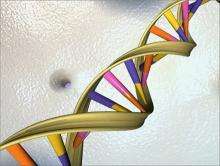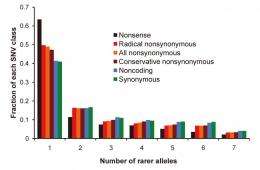Japanese joins the ranks of sequenced genomes

A Japanese has joined the elite club of humans whose genetic code has been fully sequenced, according to research unveiled on Sunday.
The unnamed male gave a sample of DNA which has been unravelled to show all three billion base pairs, or "letters" in the double-helix code for life.
Six other genomes are reported to have been fully sequenced since 2001.
They comprise the genomes of James Watson, who co-discovered the structure of DNA; Craig Venter, a US biotech tycoon; a male of the Yoruba ethnicity of western Africa; two Korean males; and a male of Han Chinese ethnicity.
The study, published online in the specialist journal Nature Genetics, is headed by Tatsuhiko Tsunoda of the Centre for Genomic Medicine in Yokohama.
An international research consortium has launched the so-called "Thousand Genomes Project" aimed at fully sequencing the genomes of 1,000 anonymous individuals and placing the data in the public domain.

The project aims at shedding light on genetic variations that can explain inherited vulnerability to disease, tailor drugs to individual needs and help explain the odyssey of human migration.
In email exchange with AFP, Tsunoda said he was cautious about making any early comparison between the Japanese and the other known genomes, as the seven sequencing projects used different methods to unravel the DNA and analyse it.
"More samples -- dozens -- would be necessary, which is our future plan," he said.
Tsunoda said his team were working on new ways to spot patterns of multiple variations in the gene code.
"In the future, we would be able to find (a) huge number of variations in individual genomes that should be related to many diseases," he said.
More information: Akihiro Fujimoto, Hidewaki Nakagawa, Naoya Hosono, Kaoru Nakano, Tetsuo Abe, Keith A Boroevich, Masao Nagasaki, Rui Yamaguchi, Tetsuo Shibuya, Michiaki Kubo, Satoru Miyano, Yusuke Nakamura, and Tatsuhiko Tsunoda. Whole genome sequencing and comprehensive variant analysis of a Japanese individual using massively parallel sequencing. Nature Genetics (2010). DOI: 10.1038/ng.691
(c) 2010 AFP
















